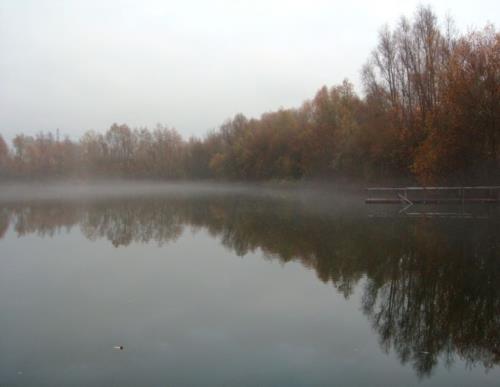
Our SSI Freediving course: Part 2 – open water.
On a damp, dreary November morning (nudging the mercury in the thermometer no higher than 10C) we met our instructors at Wraysbury, on the outskirts of London; one of the UK’s best loved and most used inland Scuba venues, tucked under the noisy approach to Heathrow (Europe’s biggest and busiest airport). We were given a pair of ‘open cell’ wet suits, whose soft, very tightly clinging neoprene – although only 5mm thick - was intended to protect us from the cold. Our instructors had decided from memory which size wetsuits we would need, and I suppose I should be flattered that the suit they had brought for me to wear was intended for a much taller man (I will leave my wife to draw her own conclusions as to why the suit given to her was also far to big). Another interesting point about freediving wetsuits is that they have to be lubricated before they can be put on. The standard technique seems to be mixing an eco-friendly hair conditioner (the type that won’t kill the fish living in the water you’ve chosen to dive in) with the pond water, then applying the mixture to the inside of your wetsuit before climbing into it. Even with this lubrication the suits are really hard to get on.
After more than a few minutes of standing wearing nothing but swimming costumes, in a freezing, rain soaked carpark, getting stuck inside various arms, legs and necks of the wetsuits we were finally in and ready to go freediving for real.
The mist hanging over the water gave a fairly good indication that the lake was going to be at least a little bit warmer than the air we were about to leave, which was true. As the freediving kit is so minimal, the wetsuits are so flexible and the fins are so very cumbersome, giant stride entries aren’t really appropriate, so we simply walked down the slipway with our fins tucked under our arms and pulled them on as soon as the water was deep enough to float in. Once in the water I noticed the ingress of cold water into my open cell wet suit was practically zero, and as you are weighed to be neutrally buoyant at 10m deep, on the surface I floated perfectly comfortably.
Having learned to dive in water with less than ideal viz, and very little to see from the surface, I typically ‘snorkel out’ by rolling onto my back and casually finning, while chatting to my buddy and occasionally glancing over my shoulder to see if I’m heading in the right direction. And that’s exactly what I did on my first free dive. As soon as I kicked out with my fins I could see how incredibly efficient the long blades were, I shot through the water. I kicked harder and went faster. I folded my arms, tucked my chin into my chest and kicked until my shoulders rose out of the water and tiny bow waves streamed out from my sides. This was great fun. I was even working up a sweat in the ice-cold water. After a few minutes of pretending to be a speedboat I swam over to the buoy where the others had started to assemble, got my breath back, then relaxed into the deep breathing, almost meditative state, that prepares you for a dive.
The qualifying dives for freediving are a bit like PADI Open Water, in that they consist of four sessions over two days. The dives you practice are Free Immersion (which is basically pulling yourself down a shot line), Constant Weight (which is swimming down using fins) and some safety procedures, such as rescuing and reviving, removing your mask etc.
On my first dive I realised the importance of equalising while freediving. When you freedive you’re moving towards the bottom a lot faster than you ordinarily would while SCUBA diving – the first kick after your duck-dive takes you down several meters. Even though I rarely have any problems with my ears, I could feel the pressure building across the bridge of my nose, above my eyes and in what felt like the roots of my teeth. The bottom of the lake was at around nine meters (theoretically the qualifying dives should be to ten meters or 33feet, but thankfully, if the only diving lake in your area is nine meters deep common sense kicks in and SSI are happy to let the last meter slide). When you’re diving in two meters viz nine meters can seem quite a long way down, and despite being able to hold my breath for minutes in the swimming pool, with the adrenalin of the first dive making my heart race I was probably only good for twenty seconds of bottom time. But down there, in the dark, you would be amazed how long twenty seconds can last.